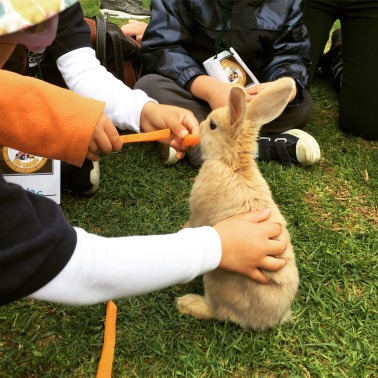Horses do not often physically touch other horses, certainly not as often as dogs or some humans (particularly of the southern variety). Instead, they connect through the space between them, where more subtle energies flow. They communicate using this space – its size, direction, orientation – and when they do touch, it is with a specific purpose, of addressing a physical need, such as an itch, or reinforcing a boundary-setting message when facial and body language doesn’t seem to convey. When we put walls or metal bars between horses, we impair their ability to interact through space, and then it becomes clear that visual or auditory cues from other equines are not enough. Horses housed in boxes become desperate for the free but full space between bodies. Their often disturbed, depressed, or antisocial behaviors reveal the desperation for this basic equine need.
As human beings, considerably less astute or sensitive than horses, we need the actual physical touch. When it is lacking, in childhood, the wiring of the brain gets all messed up, the social behavior networks  collapse, and the organism fails to thrive. Like monkeys, we must feel the grasp of protective arms in order to be sure of our place in the world. Touch on specific body areas, such as the outside upper arm where the hugs land, the cheeks, the lips, provides a shot of the attachment hormone oxytocin, that gives us a sense of belonging and safety. Likewise, the sensation of touching something soft, such as skin, fur or fleece, induces waves of oxytocin to pulse through us. Maybe this is why children love holding bunnies, kittens and cats, puppies, ducks and chickens, and all other sorts of furry creatures, including horses.
collapse, and the organism fails to thrive. Like monkeys, we must feel the grasp of protective arms in order to be sure of our place in the world. Touch on specific body areas, such as the outside upper arm where the hugs land, the cheeks, the lips, provides a shot of the attachment hormone oxytocin, that gives us a sense of belonging and safety. Likewise, the sensation of touching something soft, such as skin, fur or fleece, induces waves of oxytocin to pulse through us. Maybe this is why children love holding bunnies, kittens and cats, puppies, ducks and chickens, and all other sorts of furry creatures, including horses.
So whe re am I going with this? People, horsey or not, all like to stroke the horse’s nose, face, neck, back, never pausing to ask themselves if it is indeed as pleasurable for the horse as it is for the human. Take for instance the hearty slap that many bestow on the horse’s neck: “Good boy!” SLAP! But when you come to think of it, with all this touching, horses are likely perceiving us as shouting at them, physically and energetically. And we expect them to enjoy it and don’t really give them much choice about it, most of the time anyway. If we did, we would find out that being permitted by an equine to touch them is a veritable gift. With increasing practice and awareness, we may discover that just standing next to a horse, without touching, without ropes or gadgets, and connecting through the space between the bodies, is even more rewarding and electrifying. Try it.
re am I going with this? People, horsey or not, all like to stroke the horse’s nose, face, neck, back, never pausing to ask themselves if it is indeed as pleasurable for the horse as it is for the human. Take for instance the hearty slap that many bestow on the horse’s neck: “Good boy!” SLAP! But when you come to think of it, with all this touching, horses are likely perceiving us as shouting at them, physically and energetically. And we expect them to enjoy it and don’t really give them much choice about it, most of the time anyway. If we did, we would find out that being permitted by an equine to touch them is a veritable gift. With increasing practice and awareness, we may discover that just standing next to a horse, without touching, without ropes or gadgets, and connecting through the space between the bodies, is even more rewarding and electrifying. Try it.
This translates nicely into a metaphor about relationships, and the expectations, conscious and otherwise, we have about them and about our partners. We usually assume that what feels good to us, must feel good to the other, and become surprised or even upset when this is not the case, or when our expectations are not met. Keeping horses in comfortably furnished, cozy, warm stables is an example of such assumption. Mindfully spending time with horses, or with other non-submissive species, or even with people of differing political convictions, will reveal to us the expectations and assumptions that can cause all sorts of difficulty in forming relationships. This awareness will free us to consciously decide whether to maintain those expectations or let them go, and then to communicate our expectations more clearly to those around us. For more on this topic, watch Teal Swan’s episode “Priceless Love Advice (Expectations and Assumptions)”, at TealSwan.com/watch.

